A Magical Christmas
December 22, 2013
A Magical Christmas
Sometime during the reign of Herod the Great, probably around 4 AD, a baby who became known as Jesus was born of humble Jewish parents during the time of census taken in Bethlehem. From these origins somehow there developed the doctrines of the incarnation and the virgin birth – two separate ideas which have something in common – that atheists and agnostics alike reject them both as incredible ideas made up by the early church. But are these two doctrines at the heart of the mystery of Christmas really so unbelievable?
Luke writes his ‘orderly account’ from the testimony of eyewitnesses sometime between 80 and 90 AD, that is,  about 80 years after the events in question. Clearly, there cannot have been any eyewitnesses to the birth of Christ alive by then, and anyway, the only eyewitnesses of any importance for the virgin birth were Mary and Joseph. Luke tells of the angel Gabriel appearing to a virgin who was espoused to a man called Joseph and announcing “You will be with child and give birth to a son, and you are to give him the name Jesus”(NIV) and when Mary questions how this can be as she is a virgin, the angel replies “the Holy Spirit will come upon you and the Most High will overshadow you…for nothing is impossible with God” (Luke 1:35,37).
about 80 years after the events in question. Clearly, there cannot have been any eyewitnesses to the birth of Christ alive by then, and anyway, the only eyewitnesses of any importance for the virgin birth were Mary and Joseph. Luke tells of the angel Gabriel appearing to a virgin who was espoused to a man called Joseph and announcing “You will be with child and give birth to a son, and you are to give him the name Jesus”(NIV) and when Mary questions how this can be as she is a virgin, the angel replies “the Holy Spirit will come upon you and the Most High will overshadow you…for nothing is impossible with God” (Luke 1:35,37).
So, Luke teaches, Mary was made pregnant by the Holy Spirit and Jesus was born of a natural mother and a supernatural father – as the Catholic encyclopaedia puts it: “the germ in whose development and growth into the Infant Jesus, Mary co-operated, was fecundated not by any human action, but by the Divine power attributed to the Holy Ghost.” (New Advent), or as one of my students once wrote, closer to the truth than her slip of the pen intended: 'Jesus was born by supernatural contraception'.
Those who support the traditional argument of the historicity of the virgin birth apply historical criteria such as eyewitness accounts (presumably the testimony of Mary passed on to other people by oral tradition). However, the opening of Luke’s gospel does not read like history: an angel appears and speaks, his message of a virgin conception is somewhat fantastical and the philosophical argument seems to extend as far as saying – I know this sounds incredible, but anything is possible with God. If God is so able to suspend natural laws of conception, could he not also suspend the natural laws that are killing millions of small children in Africa even as I write this by the deadly diseases of HIV and malaria? It seems odd to me to invoke the God of this kind of miracle and then say “oh but he chose only to behave like that once in history” – if so, what sort of historical fact is this?
According to the liberal American Bishop John Spong, we should not read such accounts as history – that is to apply a much later view of events as historical in an age of pre-history, when the dominant form of teaching was called midrash. “Midrash represented efforts on the part of the rabbis to probe, tease, and dissect the sacred story [Old Testament] looking for hidden meanings, filling in blanks, and seeking clues to yet-to-be-revealed truth. The gospels, far more than we have thought before, are examples of Christian midrash. In the gospels, the ancient Jewish story would be shaped, retold, interpreted, and even changed so as to throw proper light on the person of Jesus. There was nothing objective about the Gospel tradition. These were not biographies. They were books to inspire faith. To force these narratives into the straitjacket of literal historicity is to violate their intention, their method, and their truth … once you enter the midrash tradition, the imagination is free to roam and speculate.’ Spong (Born of Woman p 18,184) Click below to read more….
So, the argument goes, the Jesus story was told and retold from the time of his death around AD34 onwards until the first manuscripts came to be written. The earliest was so we believe, Mark, written between 60 and 70 AD, which has no birth narrative at all. Luke was written for a Greek audience some years later, and Matthew for a Jewish Christian audience. They contain much of Mark’s material, often reworked to fit their audience but add additional stories that fit their purpose – it is thought from a further source of stories called Q. It is highly likely that the Q source were stories circulating the scattered Christian communities of Palestine, stories told and retold, embellished but (again this counts against the idea of history) never written down in fixed form until the time of Luke and Matthew.
For, again, if we are to apply historical criteria, we need to establish the historical method – as near neutral observers, recorded testimony which is authenticated, with clear evidence of viewpoint and partiality so that the rest of us can weigh and judge. These things are lacking from these birth narratives: they are truly strange, fantastical, almost magical, telling of impossible things in a form more attributable to myth and legend.
Image: Giotto The Virgin Birth copyright Common Licence

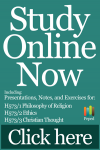
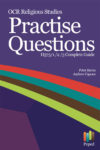
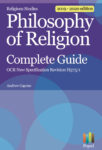
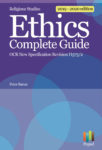
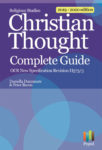
0 Comments